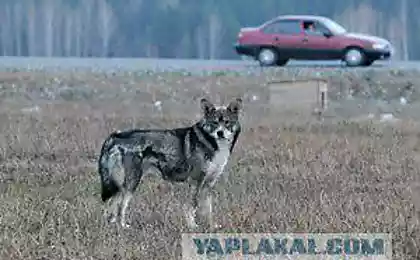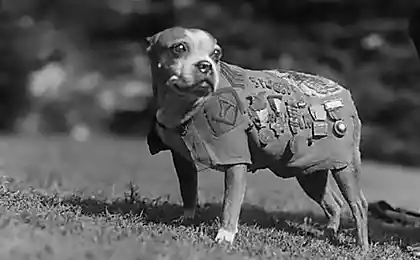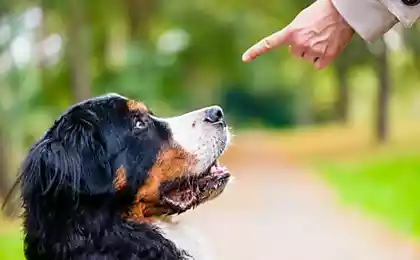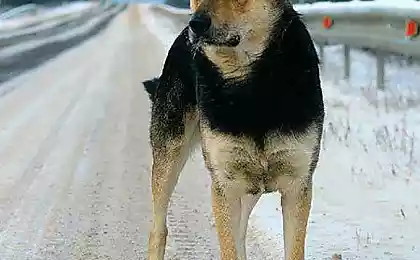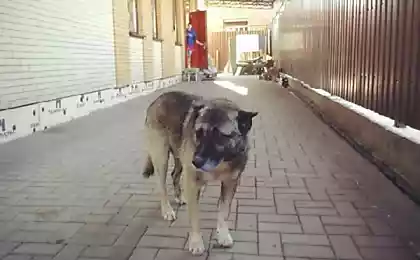281
Why the dog barks and how to understand it
Every dog owner at least once dreamed of learning to understand its language. This way we can better understand our pets and communicate with them. It seems like an impossible dream, but in fact, dogs communicate with us by barking. Today we will talk about what it means. barking And how to understand it.

DepositPhotos
Editorial "Site" Vitaly Kononova, founder of the Animal’s Speaking Club project, is created to help animals and their owners understand each other better. Today we are learning to communicate with our pet.
Why does the dog bark, "What does the dog say?" he leans over to the child on the playground, the mother asks. "Av-av!" the contented child replies, reaching out his hands to the shaggy dog passing by. Indeed, if you ask a person who is far from ethology, with the help of which dogs communicate, you will hear: “With the help of barking, of course.”
In the perception of people, barking becomes an inseparable part of the dog. But what exactly are they using it for? Why is this “way of communication” for one pet becoming a problem, and for another – the main pride and value?

DepositPhotos It’s all about the cause of barking and its matching situation. Keep in mind that if a dog barks, he needs it for something. She does not harm, does not want to do “for evil”, she tries to convey some information, including information about her internal state.
Scientists have identified 6 types of barking. I want to give you a brief description of them, taken from the book "Barking - What Dogs Talk About" by Thurid Rugos, a wonderful Norwegian cynologist and specialist in dog behavior. Below will be presented all six types, indicating their individual acoustic pattern and associated physical activity.
As we can see, the situations in which the dog starts barking can be completely different. Therefore, it should always be remembered that in the case of a problem of excessive barking, the methods of solving must be based on an understanding of the original cause and motivation of the animal.
Dogs do nothing for no reason. Recently, we talked about why dogs have behavioral problems and what the reasons may be.
Lay is just one way of communicating. In fact, the topic of dog behavior and communication is much more extensive, and if you want to better understand your pet, then be sure to check out the Animal’s speaking club. There's a lot of interesting information!
Did you notice the difference during the manifestation of barking, and in what it was expressed? In the comments, you can share your observations of barking dogs.

DepositPhotos
Editorial "Site" Vitaly Kononova, founder of the Animal’s Speaking Club project, is created to help animals and their owners understand each other better. Today we are learning to communicate with our pet.
Why does the dog bark, "What does the dog say?" he leans over to the child on the playground, the mother asks. "Av-av!" the contented child replies, reaching out his hands to the shaggy dog passing by. Indeed, if you ask a person who is far from ethology, with the help of which dogs communicate, you will hear: “With the help of barking, of course.”
In the perception of people, barking becomes an inseparable part of the dog. But what exactly are they using it for? Why is this “way of communication” for one pet becoming a problem, and for another – the main pride and value?

DepositPhotos It’s all about the cause of barking and its matching situation. Keep in mind that if a dog barks, he needs it for something. She does not harm, does not want to do “for evil”, she tries to convey some information, including information about her internal state.
Scientists have identified 6 types of barking. I want to give you a brief description of them, taken from the book "Barking - What Dogs Talk About" by Thurid Rugos, a wonderful Norwegian cynologist and specialist in dog behavior. Below will be presented all six types, indicating their individual acoustic pattern and associated physical activity.
- Laying
It manifests itself when the dog is waiting for something pleasant (walk, treat) and often when the owner meets. Acoustic pattern: A more or less continuous barking of high frequency may sound a little hysterical. Sometimes it consists of series with small pauses. Could include moans.
Physical activity: An excited animal usually jumps up, spins, runs back and forth, and wags its tail intensely.
DepositPhotos - Warning barking
It is used by dogs in situations where they need to warn other members of the pack. Acoustic picture: one short, sharp "buff" warning of an enemy approaching.
Physical activity: In this situation, the dog tries to escape. In some cases, one member of the pack stays in place and takes over the protection of the others.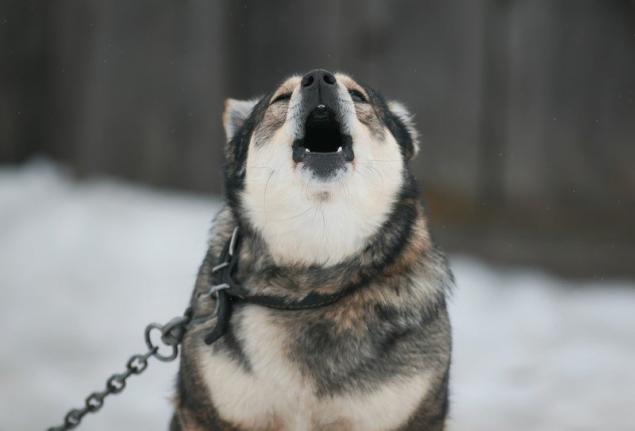
DepositPhotos - Fear-induced barking
Acoustic pattern: Barking can sound very high, representing a whole series of sounds. Kind of looks like an excited bark. Physical activity: When a dog experiences fear, it increases stress levels. Due to the high content of adrenaline in the blood, she is in constant movement and behaves restlessly. Sometimes the dog starts biting objects or biting parts of its own body. In some cases, it becomes completely apathetic.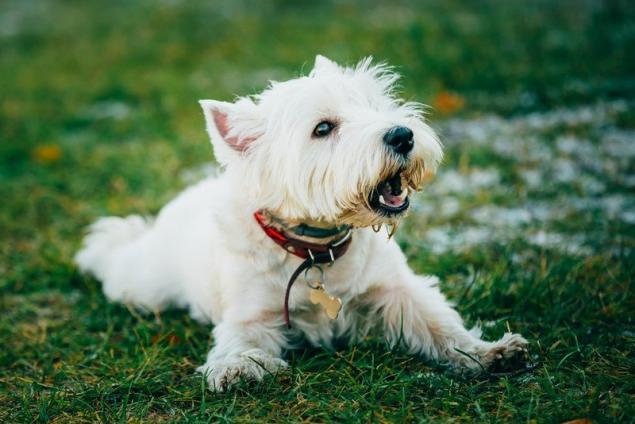
DepositPhotos - Protective and guard barking
Acoustic pattern: This type of barking includes growling sounds. It can be short and low. However, if the dog is also fearful while guarding something, then his voice may sound quite high. Physical activity: The dog lunges forward toward the object it is defending against, thereby trying to force it to move away.
DepositPhotos - Lay of despair and loneliness
Acoustic picture: such a bark is a continuous series of sounds that merge into an infinitely stretching tone. Sometimes it turns into a howl, which is replaced by barking again. Physical activity: Such barking is often complemented by obsessive or stereotypical behaviors.
DepositPhotos - Learned barking
Acoustic picture: the dog barks for a while, then it pauses, during which it waits for the reaction of the owner. Then she starts barking again, paused to look at the host or approach him. Physical activity: The dog looks around to make sure it has attracted attention or tries to make contact with the owner to get the reward it wants.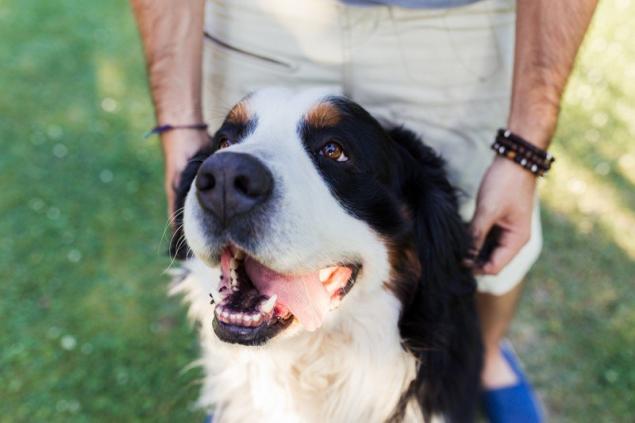
DepositPhotos
As we can see, the situations in which the dog starts barking can be completely different. Therefore, it should always be remembered that in the case of a problem of excessive barking, the methods of solving must be based on an understanding of the original cause and motivation of the animal.
Dogs do nothing for no reason. Recently, we talked about why dogs have behavioral problems and what the reasons may be.
Lay is just one way of communicating. In fact, the topic of dog behavior and communication is much more extensive, and if you want to better understand your pet, then be sure to check out the Animal’s speaking club. There's a lot of interesting information!
Did you notice the difference during the manifestation of barking, and in what it was expressed? In the comments, you can share your observations of barking dogs.









